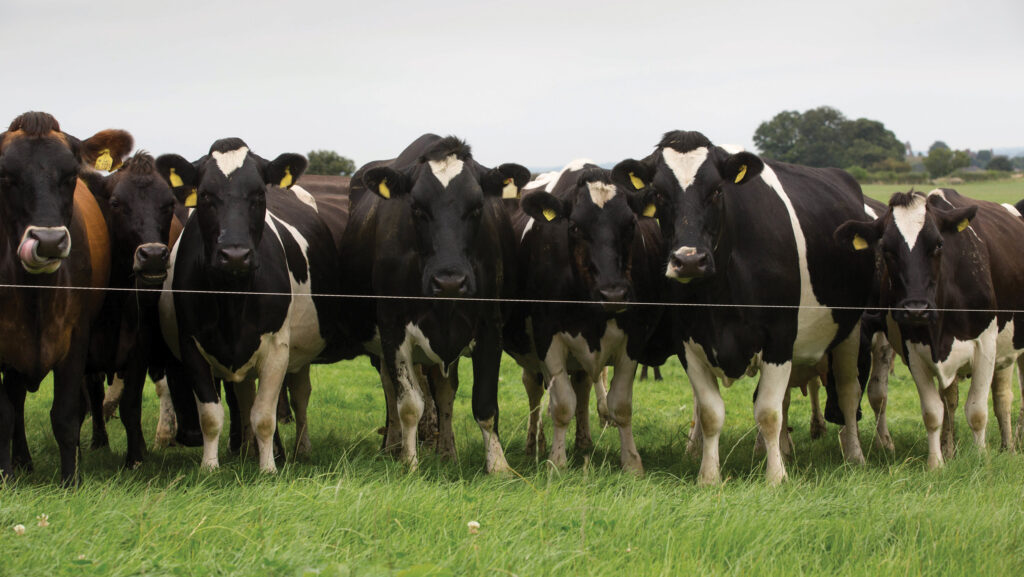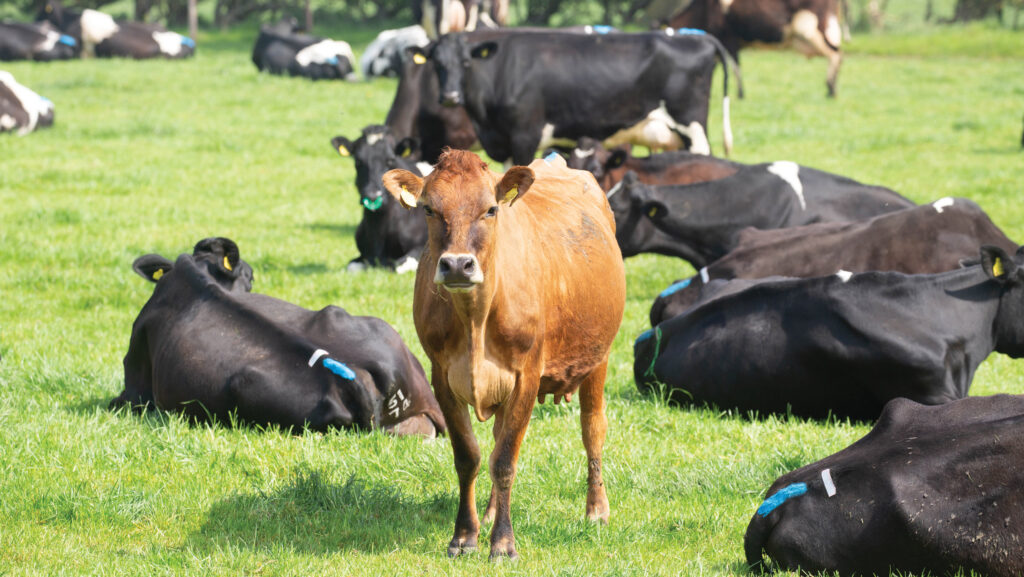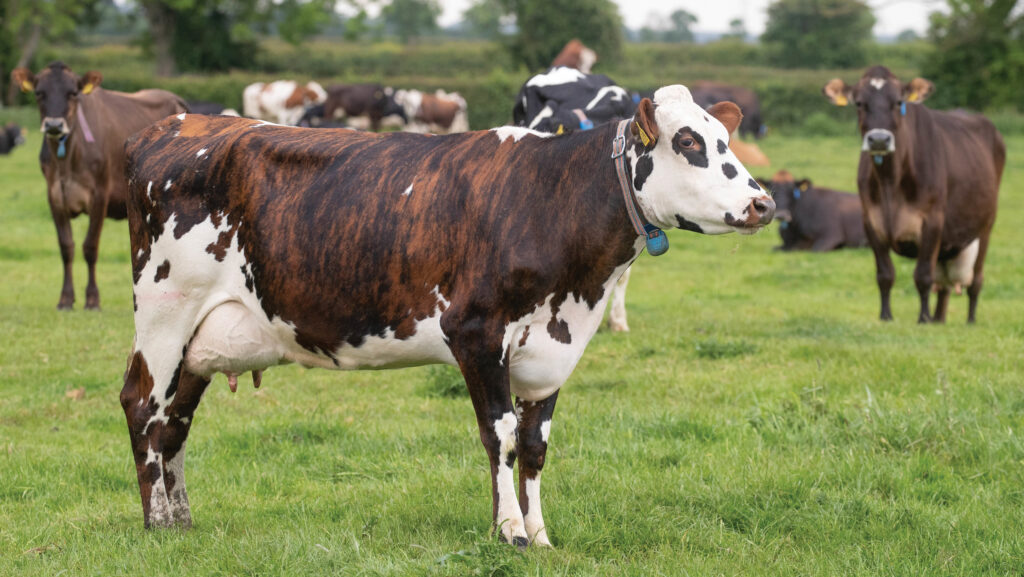Why breeding goals are key to optimise days in milk
 © Tim Scrivener
© Tim Scrivener In a block-calving herd, the earlier a cow calves, the more milk she can produce before the herd is dried off as one.
This means it makes business sense to breed as many as possible in the crucial first six weeks of mating.
The profit margin reduces as every day passes outside that key block-calving parameter.
And this is not solely down to the cow putting less milk in the tank, says LIC consultant Sean Chubb.
See also: Tips on motivating staff during block calving
“In a spring-calving system, we ideally want cows to go straight out to grass after calving and to stay there until drying off.
“Even if there are facilities to milk those stragglers at the back end of the year, that milk will cost more to produce,” he says.
“Having everything at the same stage of lactation makes management easier because the block can be run as one – there is no need for fresh-calver or late-lactation groups – and they can all have the same specification of feed through the lactation, with efficiencies gained there.”
Knock-on effects
Seasonality payments in milk contracts have incentivised some farmers to relax calving patterns, but at what expense?
“I don’t have figures to back it up, but I don’t think it makes the herd more profitable, and the farmer will end up with a messy calving block,” Sean reckons.
There are knock-on impacts in the next breeding cycle, too, as the later a cow calves, the smaller her chances of getting back in calf in the first six weeks.

© Tim Scrivener
Cows need to calve at least six weeks before the mating start date.
For heifers, up to nine weeks should be allowed, because the recovery period from calving is longer than for a mature cow.
It is particularly important, therefore, that heifers calve at the start of the block.
“[In this way,] a heifer will be much more ready to get back in-calf by mating time and to calve again at the start of the block,” Sean explains.
Breeding goals
While many farmers focus on calving rate targets, he says breeding goals are more important and the best indicator of fertility, as they cannot be manipulated.
“I hear some farmers say that they have a 73% calving rate, for example.
“But to achieve that, they have introduced a lot of heifer replacements or have purchased cows and loaded the front end, without acknowledging that there is a fertility problem in the herd.
“That’s why it is important to focus on breeding targets, because a six-week breeding rate can be achieved, even exceeded, without the need to have a third of the herd as first-lactation animals,” he says.
Days in milk
Breeding targets for a 12-week block should be a 78% six-week in-calf rate, 60% conception and a 94% in-calf rate at the end of that period.
By meeting these targets, a good calving pattern in a 12-week block can be achieved, Sean suggests.
“This would be 60% of the herd calved by week three, 87% by week six and 98% at week nine,” he says.
For first-time calvers, he advises aiming for 75% calved by week three of calving, and 92% by week six.

© Tim Scrivener
These targets are really important for getting a tight calving block and days in milk, he says.
“If cows calve in the first three weeks, they have a 75% chance of getting in-calf in the first six weeks at the next mating.”
This chance reduces to 65% when calving is between weeks three and six, 52% from weeks six to nine and 35% in nine weeks or longer.
How to set up the herd up for a tight calving pattern
The two principal day-to-day factors that put farmers in control of achieving breeding targets are body condition score (BCS) and heifer management.
The animal should be at the correct BCS throughout the year.
“If a cow is at target BCS at drying off, she will be at the right target at calving down, and by the time she gets to mating she will be on a rising plane of nutrition and in a better place for breeding. That leads to more milk production,” says Sean Chubb of LIC.
First calvers should have reached 90% of their mature bodyweight when they enter the herd.
Unless this is achieved, more energy will be diverted into growing during the first lactation, putting pressure on milk production and compromising fertility ahead of the next breeding period.
“If a heifer is not fully grown, it will be difficult for her to compete against mature cows.
“For example, the herd might be supplemented with silage at the start of the lactation, and if a heifer is a bit small and can’t get to the feed face to eat, milk production and fertility will suffer,” says Sean.
Which animals should be bred from?
Selecting the healthiest and most fertile cows for breeding is important, as these provide the next generation of heifer replacements.
Pre-mating heat detection four weeks before the start of the planned mating period will identify those fertile and cycling cows.
“By giving yourself four weeks, you have time to find the non-cycling cows and undertake intervention before the start of mating,” he says.
“It gives them as many chances as possible for getting in-calf in that first six weeks.”
Tail paints, scratch cards and technology embedded in ear tags, collars and pedometers will flag up whether a cow is cycling.
When heat is detected, the date is recorded, and from this, the date that she is expected to come into heat at breeding can be calculated.
“If she doesn’t, it will highlight that there is a potential problem with that individual cow.
“If there are lots of cows that this is happening to, it might be due to an underlying illness that needs to be investigated, or even that there might be an issue with the feed,” says Sean.
While there is an obvious cost to a synchronisation programme, Sean believes focusing only on that upfront outlay can be short-sighted.
The cost of not getting a cow in-calf until later in the planned mating period, with the result that she is in milk for fewer weeks, must also be factored in, he says.
Which heat detection method is most effective?
Whichever method is chosen, Sean thinks that as long as they are applied or used correctly, they all roughly have the same impact on breeding in a block-calving herd.
However, he points out that it is important to understand the limitations of each one.
“For example, in the spring, cows will be losing their hair as they shed their winter coats, so if you are not touching up the tail paints, you can run into problems.
“There can also be issues with scratch cards where you have trees,” he says, adding that some farmers use tail paints or scratch cards alongside technology to give them two points of reference, as a “failsafe” method.
